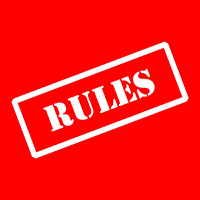Podcast: Play in new window | Download | Embed
Today’s Guest

In this episode you will learn about how Duncan uses the techniques he learned inspiring creativity at Walt Disney World in the field of small businesses, startups and soloprenuers.
Duncan Wardle is a creativity and innovation keynote speaker and consultant.
This is the 85th session of Smart Brand Marketing.
MY BIGGEST TAKEAWAY: It is often just as challenging for a one person team to get creative as getting a team of corporate employees to actually think outside the box.
TOPICS DISCUSSED
- Getting creative
- Brainstorming
- Large companies vs small companies
- The beauty of ‘yes and’
- Mission statements
- The kitchen sink
- Breaking rules
- The ‘what if’ questions
- No more lines
Getting Creative for Your Business
“How can I be creative?” This is one of the questions that any business owner tends to encounter on a frequent basis. You might even have heard of stories of businessmen who managed to avoid encountering potentially disastrous predicaments or pull their businesses out of one with a particularly creative solution.
Creativity is one of those concepts that you encounter so frequently that you often have a hard time actually applying it. Don’t worry, though. Creativity is something that you either get right at the first attempt or eventually master it with constant practice. To do that, there are a few things you have to tackle first.
Why Does Creativity Have to be Tapped Into?

There’s this misconception that creativity is this ability that comes as natural as breathing. The problem here is that naturally creative people are hard to come by these days and the reason is quite understandable.
Always keep in mind that the brain is separated into 2 regions. The left brain is the one that controls the more logical and linear aspect of thinking. This part of the brain is the most active when you are solving problems, organizing things, and planning for future occurrences.
The right brain, on the other hand, is where the creative side of you dwells. It is here that your ideas and imaginations are being processed and where intuition reigns supreme. As the right brain deals with the more creative and imaginative aspects of thinking, this is where the idea for your business was born in.
The problem here is that, more often than not, running your business requires you to rely more on the left side of the brain. This is not your fault because business administration tends to be a largely logical field. You need to think straight to deal with problems because every decision you make for your business tends to result tangible consequences. You can’t put the fate of your entire business on imagination and whimsy, after all.
So does this mean that your creative side has to take the back seat for most of the time when running the business? The answer is in the negative. There are ways that you can allow both parts of your brain to function together and even come to a compromise. In other words, there is a way to deal with day to day challenges in the business in a particularly creative way.
Some Truths about Engaging With Your Creative Side
It goes without saying that creativity is like a skill and, since it is similar to a skill, it has to be honed. Tapping into your creative side will require you to learn a few things about creativity first such as:
- 1. It Needs Your Concentration
 The thing about creativity is that it does not tend to appear unless it has your full attention. From this point, you can come to the realization that the primary hindrance of you engaging with your creative side is multi-tasking. Concentrating on too many things at once requires the left hemisphere of the brain to take command which means that the right one has to sit this one out.
The thing about creativity is that it does not tend to appear unless it has your full attention. From this point, you can come to the realization that the primary hindrance of you engaging with your creative side is multi-tasking. Concentrating on too many things at once requires the left hemisphere of the brain to take command which means that the right one has to sit this one out.
It is important that you a lot a time for creative thinking each day and at a place where distractions are minimal to none. The less physical and mental noise you have to go through, the more your creative side will emerge.
- 2. It Needs Focus
 The beauty of a brainstorming session is the sheer volume of ideas that can be created here. It’s the perfect embodiment of the phrase “there are more ways than one to skin a cat”, only that there a lot of people attempting to skin the proverbial cat (any gross imagery not intended).
The beauty of a brainstorming session is the sheer volume of ideas that can be created here. It’s the perfect embodiment of the phrase “there are more ways than one to skin a cat”, only that there a lot of people attempting to skin the proverbial cat (any gross imagery not intended).
The problem here is that it’s easy to lose direction the more ideas your team generates. This is where you must find a way to rein your ideas in so that you and the team don’t overdo the thinking that you suffer from analysis paralysis.
Before every brainstorming session, you must define your goals by identifying the problems that need to be solved. During the session, you or someone else must facilitate the exchange of ideas so that every solution remains realistic. After all, what good is creativity if the solutions you come up with borders on the ridiculous and impossible?
- 3. It Must Not be Forced
 In most cases, your natural tendency to be pushy and direct as a businessman is going to impede your creative side. Creativity is something that does not work on schedule. It will never follow the clock which can be a problem if you’re the kind of person who gets things done by rushing.
In most cases, your natural tendency to be pushy and direct as a businessman is going to impede your creative side. Creativity is something that does not work on schedule. It will never follow the clock which can be a problem if you’re the kind of person who gets things done by rushing.
It is at this point that you must master there of changing the pace of how you get things done. If there’s an emergency, it is understandable if you work at a hectic pace. The faster you can solve problems, the better it will be for your business. However, if there is no need for you to be on edge, you must find ways to relax. The more you are at ease, the more you allow the right side of your brain to do what it does best: imagine.
- 4. It Comes From Your Passions
 Look back to the time you set up the business. You were in it because you love what you’re doing, right? This might come as a surprise for you but your creative side is at its most active when you do what you are doing.
Look back to the time you set up the business. You were in it because you love what you’re doing, right? This might come as a surprise for you but your creative side is at its most active when you do what you are doing.
If you tend to rush things, then chances are that you are not particularly liking what you are doing. To solve this, you must let someone else do that aspect of the business for you. If you hate doing the accounting, hire an accountant to do it for you. If you get mired by a lot of paperwork from prospective employees, hire someone else to do the hiring process for or with you. The less burdened you are doing things that you find no enjoyment on, the more you have time for yourself to come up with neat ideas for the business.
- 5. It is Not a Solo Act
 The surprising thing about creativity is that you can’t jump-start it without some inspiration. Getting inspired, in turn, requires you to not shut yourself off from the rest of the world. This is quite important in business since running one is never a one-man affair.
The surprising thing about creativity is that you can’t jump-start it without some inspiration. Getting inspired, in turn, requires you to not shut yourself off from the rest of the world. This is quite important in business since running one is never a one-man affair.
It’s often in business that you create ideas and then compare and contrast them with other ideas. What this does is that it allows you to refine your strategies by listening to the input of others and, in turn, help others improve on theirs. Also, being a good leader in business will require you to constantly inspire your team to be as creative as possible through engaging with them, giving them incentives, and, of course, promoting a workplace that is conducive to creativity.
How to Really Think “Outside the Box”
You have heard the phrase “thinking outside the box” in some form in your life. It’s a by-word in business and creativity that not a lot of people know what it means anymore. So how does one think outside of the box, really? Here’s how:
- 1. Set the Rules
 Surprisingly enough, to think outside of the box you have to assemble the box itself first. Don’t get the wrong idea, though. The box is not there to limit you but to guide your creativity. This is because too much freedom can actually hinder on your creativity.
Surprisingly enough, to think outside of the box you have to assemble the box itself first. Don’t get the wrong idea, though. The box is not there to limit you but to guide your creativity. This is because too much freedom can actually hinder on your creativity.
By setting up some boundaries, you can give your mind the direction it needs to come up with strategies that are as effective as they are creative. For instance, in a brainstorming session, you as the leader should establish first what problem you are trying to find a solution for. Is it marketing strategies for Facebook and Instagram? Is it dealing with congestion in your customer service areas?
Whatever that problem is, it has to be identified first to give your team the direction it needs. The less broad the topic is, the faster you and your team can come up with brilliant ideas.
- 2. Find Inspiration in Randomness
 As was stated before, creativity is not something that a lot of people can tap into on a whim. It has to be triggered and that trigger often comes in the form of an inspiration. The best form of inspiration, in turn, are ones that seemingly are unrelated to the problem.
As was stated before, creativity is not something that a lot of people can tap into on a whim. It has to be triggered and that trigger often comes in the form of an inspiration. The best form of inspiration, in turn, are ones that seemingly are unrelated to the problem.
If you’ve noticed why some creative teams would put up all this weird and quirky stuff on their work areas, they are not doing it for the sole purpose of being weird and quirky. It’s there to give their minds the jolt of inspiration when it needs it.
You can do this with your team by letting each member decorate their work areas with things that reflect their character. Some people would even bring their own action figures to work just for inspiration. If you want a less labor-intensive approach, just go to Google and press the “I’m Feeling Lucky” button. The things that that search engine can provide you with will be endless.
- 3. Quantity, Not Quality
 When generating ideas for the business, it’s best that you bench the logical/editorial side of your brain for the moment. That part of your brain will just get in the way by shooting down ideas that you and your team can come up with.
When generating ideas for the business, it’s best that you bench the logical/editorial side of your brain for the moment. That part of your brain will just get in the way by shooting down ideas that you and your team can come up with.
At this point, what is important is that you exhaust every ounce of idea that you and your team can possible think of, even the bad and impossible ones. After all, bad ideas can be improved later on.
You can even give your team an incentive of sorts to come up with ideas in a short period of time like, say, under an hour or 30 minutes. Things like money or the chance to leave for home early can push the brain to work at optimum levels and start generating creative thoughts. Soon enough, your team can come up with no less than 50 solutions for a problem; even if only 40% of them actually work.
Divergent Thinking: Will it Work?

You might have noticed that all of the solutions you have applied for your business seem to answer multiple problems. This is what is called convergent thinking, the creation of one solution that answers all.
However, there is a different route that you can take which is called divergent thinking. Instead of creating one solution for all problems, you think of multiple solutions for one problem.
Here’s how it works: You think of one solution for a problem and then coming up with an alternative solution for that. Now, you have two solutions. You can go further by providing alternative solutions to those two and then alternative solutions for those solutions, and so on and so forth and with each solution being comparatively different from the last.
This might be the better route to take as the creation of different paths to a certain goal is a key element of creativity. Here’s the kicker, though: divergent thinking does not work if the answers are provided for or even when the path is so clear. You and your team must find them yourself. This is why creativity often works when you are backed into a corner and there’s no way out of it but to forge your own path.
In Conclusion
Is there ever a formula for creativity? It’s safe to say that there is none. After all, the whole point of creativity is to be never tied down to a single path to solving problems. There will be days when that creative side of your brain can’t be activated, no matter how hard you try.
However, if you allow a bit of space for your brain just to exercise its more imaginative regions, then you will find yourself shifting from a purely problem-solving approach to running a business to a more innovation-centric one. All that is needed is for you to show up at your business, regularly interact with your staff, and even find problems and opportunities for growth where none bothered to look at.
What are your methods of tapping into your creative side? Do you believe that creativity still has a place in highly competitive industries? Let us know in the comments down below!
References:
RESOURCES
- Duncan Wardle ( Twitter )
- Walt Disney: The Triumph of the American Imagination
DUNCAN IN ACTION
THANK YOU FOR LISTENING!
To get more SBM content sent directly to your device as they become available, you can subscribe on iTunes or Stitcher!
Also, reviews on iTunes are extremely helpful and greatly appreciated! I read each and every one of them, and feel free to share your URL there so I can contact you later on and say thanks!


